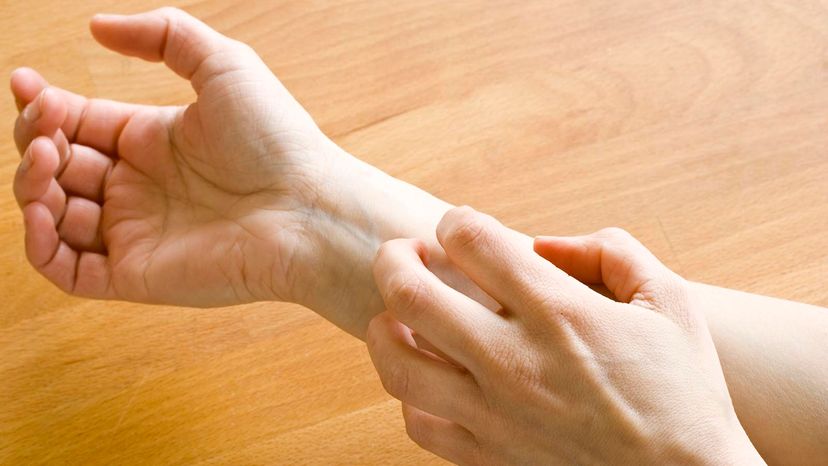Flea Bites on Humans

Since fleas can clearly spread disease, and owning a pet increases the likelihood of a flea infestation, you want to be sure to prevent fleas from setting up in your home via soft goods like fabric (or fur) because once they're inside, their quick breeding cycle means they can immediately get out of hand.
But if you have a flea infestation, how do you know if you've been bitten by a flea? An allergic reaction can appear, with swelling, itching and minuscule red spots in groups of three or four (and sometimes in a line), typically around your feet, ankles or legs. If uncontrolled, fleas can spread across your body and bite anywhere, especially if you have dense areas of hair on your legs and chest. Sometimes, hives and a rash also will show up, and scratching can cause an infection.
Advertisement
The best way to control the spread of fleas is to regularly clean and vacuum flooring, furniture, bedding and skirting boards. Typically, however, humans often are secondary options when it comes to flea bites because they don't make good hosts.
Instead, people tend to become targets for hungry adult fleas who haven't yet located the family pet or another, more suitable, host. An adult flea that recently emerged from its cocoon also may feed on an adult or child who just happens to walk or crawl by.
If you are bitten by a flea, be sure to:
- Wash the bite.
- Use an antiseptic and apply an icepack.
- Resist the urge to scratch.
- Use lotions to treat the itch.
- Consult a pharmacist about over-the-counter anti-itch creams and antihistamines.
If you have been bitten and have difficulty breathing, nausea, and swelling of the lips or face, you should seek medical attention immediately. You might have an infection if you experience swollen glands, extreme pain around the site of the bite, excessive redness, or a white pocket or rash. In some rare cases, fleas carry diseases that can be transmitted through bites, including flea-borne spotted fever, plague, typhus and cat scratch fever.